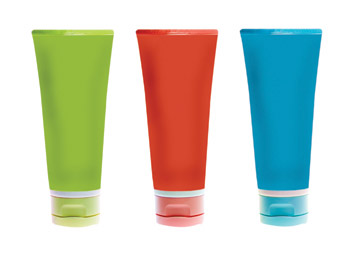Lookalike products: How close is too close?

Brand owners need to be weary of imitators and their lookalike products. You'd be surprised at some have been able to get away with
7 December 2008
Retailers and shoppers are accustomed to seeing lookalike products on the shelves in supermarkets and convenience stores. They may look like the premium brand, but they are not. One may question: “How do the manufacturers get away with producing, marketing and selling such blatant imitations?” There is no simple answer. So how do you know if the lookalike product is sailing too close to the wind?
What are lookalike products?
Lookalike or copycat products have been described by the British Brands Group as products where “distinctive features of a brand’s packaging are hijacked in order to trick shoppers into buying something they believe to be that brand, made by the brand manufacturer or sharing the reputation of that brand”. The British Brands Group has also claimed that lookalike products have caused a 20% decline in sales of branded products, and an increase of 55% in own-label share compared to own-label products in dissimilar packaging.
Trade mark infringement or passing off
Manufacturers of lookalike products obviously do not share the views of the British Brands Group. They maintain that they are merely increasing price competition which is to the advantage of the consumer. Brand owners cry foul in that lookalike products mislead consumers.
The main legal remedies available to brand holders to prevent the sale of lookalike products are those of trade mark infringement and passing off. Essentially, for these remedies to be applied, it must be shown that a consumer would be likely to be confused or has been misled.
These remedies, particularly trade mark infringement (which requires that the brand, product shape and/or packaging are registered as trade marks), are excellent remedies for the brand holder when there is actual or likely consumer confusion between the premium brand and the lookalike product. Passing off is a remedy used by brand holders that have acquired a reputation and goodwill in their product in a territory through extensive sales but who have not registered the name or the packaging of their product as a trade mark. Passing off is usually more difficult to prove than trade mark infringement which is the reason why brand holders are advised to register their brands and packaging as trade marks.
Some of these types of cases in relation to lookalikes have been considered by the Irish courts over the past few years and the decisions are never forgone conclusions.
Irish Distillers Limited V Cooley Distillery plc
This recent Irish High Court case (4 July 2008) concerned lookalike bottles of whiskey. The plaintiff’s whiskey, marketed under the brand name ‘Jameson’s’, had secured registered trade marks for the label of its product. The defendant marketed its whiskey under ‘St Patrick’s’. The Court found both trade mark and copyright infringement on the basis that the labels were substantially similar even though both products had prominent and very different brand names. This decision would be considered to be a very favourable decision from a brand holder’s point of view. The decision was not appealed as the parties reached an ultimate settlement.
Jacob Fruitfield Food Group Limited V United Biscuits (UK) Limited
Another recent (2007) case in the Irish High Court, this dealt with an interlocutory injunction application in respect of lookalike biscuit packaging. An interlocutory or interim injunction is an emergency application to the court for immediate relief pending the trial of the main case. The interlocutory injunction was granted in respect of the lookalike packaging for the fig rolls biscuits.
In this case no exclusivity was asserted in respect of the colour of the packaging, which was red. The case did however turn on the size and prominence of the brand name, Jacobs/McVitie’s on the packaging. The court granted relief as it found that there was a serious issue to be tried in terms of whether passing off existed as regards the original packaging and the lookalike packaging.
In the same case involving a cream cracker product, an injunction was not granted on the grounds that the court was of the view that the prominent display of the brand names differentiated the products even though the colour scheme of the packaging was identical.
Mars UK Limited v Burgess
This UK case in 2004 however, did not reach a successful conclusion for the brand holder. Mars, the manufacturer of cat food sold under the mark Whiskas, applied for an interim injunction to prevent the sale of a new entrant to the market sold under the brand name Supa Cat, which replicated the distinctive colour purple used on Whiskas products and which also mimicked the well-known slogan of Whiskas, “eight out of ten cats prefer…” by using the slogan “two out of three cats prefer”.
In his judgment dismissing the application for interim relief, the judge said there was an absence of evidence of confusion: “Putting myself in the position of the hypothetical shopper as best I can, and bearing in mind…factors such as the position of the product on the shelf, the relative proximity of different products, lighting and other things which can affect the perception of the shopper on any given occasion, it seems to me that no customer, reasonably alert and with reasonable eyesight, would mistake the defendant’s products for Whiskas; nor would he, or she, draw the conclusion of some commercial association.”
Case studies demonstrate that there is really no clear-cut position when it comes to lookalike products. However, the featured cases do show the importance of having a registered trade mark for the brand name and also for the packaging. Whilst, the Jacob Fruitfield case did not involve trade marks, Jacobs did however have significant reputation and goodwill in the Fig rolls biscuit packaging. It is fair to say that had the packaging been registered as a trade mark, Jacobs may well have had an easier case rather than having to prove its reputation and goodwill.
From the above cases, it is clear that if the consumer could be confused or misled, the court will find in the brand holders favour. However, what happens in a situation where the consumer is merely reminded of a product and not actually confused such as in the Whiskas decision? This is where manufacturers of lookalike products can sail close to the wind and not get caught or can they?
Unfair advantage
In circumstances where the consumer is not confused, brand holders are still nevertheless irked if a competitor’s lookalike product sits alongside theirs. There are provisions in trade mark legislation which provides protection for the brand holder against the use of identical or similar marks in respect of similar/dissimilar goods which take unfair advantage of the distinctive character and reputation of the trade mark. This is also referred to as “dilution”. The benefit of this provision is that likelihood of confusion does not have to be proved.
L’Oreal v Bellure
While the Irish courts have not made a determination on this point, the matter was considered by the English courts in the case of L’Oreal v Bellur (4 October 2006) and subsequently by the English Court of Appeal which referred a question on dilution to the European Court of Justice (ECJ) (Case C-487/07). The question referred related to whether the use of similar packaging took unfair advantage of the reputation of the registered trade mark. An answer from the ECJ is still awaited. While English decisions are not binding in Ireland, they nevertheless have persuasive authority.
L’Oreal sued seven companies that made and sold products with replica scents and similar packaging to those of its perfume division Lancôme, including Trésor and Miracle. The rival perfumes had names such as La Valeur and Pink Wonder and were usually sold on market stalls and in discount stores. In that case the judge stated that “the extent of the similarity is deliberate”. It “winks at” the packaging of the premium brand. The main considerations in the L’Oreal case were whether the similarities were deliberate, whether the competitor products were extensively advertised, whether the similarity in packaging allowed the defendants to charge more for their products, whether the copycat product had benefited from the advertising and promotion of the genuine goods, and whether the copycat product had sold because of the reputation of the original. This is a very interesting avenue which may provide relief to brand holders.
Conclusion
The conflict between brand holders and lookalike manufactures will continue and may well accelerate. The main lesson to be learned from case law so far is that brand holders must arm themselves with registered trade marks to protect their brands and packaging. In addition, they should rigorously monitor the marketplace so that any rogue competitors can be identified at an early stage.
Manufacturers of lookalike products will sometimes encounter turbulent waters and hit the rocks, but sometimes it may be plain sailing. One thing is clear; they should have a clear understanding of the lines drawn by the law and the rights of brand owners before deciding to launch a lookalike in the Irish market. No matter which side of the line you fall, it is something to bear in mind during the Christmas season.



 Print
Print






Fans 0
Followers